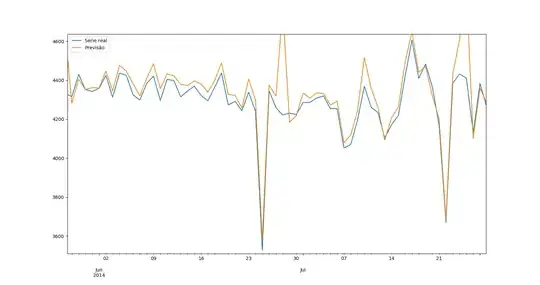The question is mainly in the title:
Given two standard normal random variables with correlation $\rho$, what is the distribution of sign of their product?
I understand that when $\rho=0$, we have two iid standard normal random variables and therefore, they take positive and negative values independently with probability $\frac12$.
But I don't know what to do if $\rho\ne0$. We can take $\rho>0$ without loss of generality (because if $X$ and $Y$ are std normal with correlation $\rho$, then $-X$ and $Y$ are std normal with correlation $-\rho$). But I could not proceed further.
